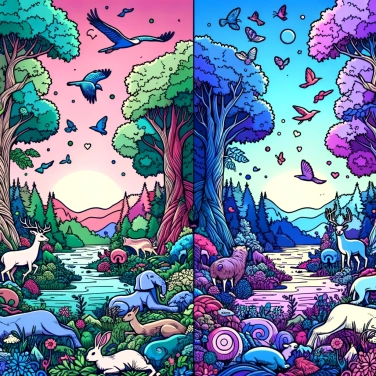Spiders have eight legs because they belong to the class of arachnids, characterized by this number of limbs.

Spiders are part of the arachnids, a group of arthropods that appeared about 400 million years ago. Their common ancestor was probably aquatic, related to extinct marine creatures like trilobites. Over time, these ancestors gradually transitioned to terrestrial life, and the specialized eight legs became a decisive advantage for their survival: increased stability, better agility, and ease of climbing or exploring various terrains. This configuration is also found in their distant relatives, such as scorpions and mites, proving that eight legs represent a solid evolutionary strategy inherited from a distant past.
The eight legs provide spiders with exceptional stability and great agility. Instead of moving all at once, their legs function in groups of four: while four move, the others maintain stability, thus reducing vibrations and preventing prey from fleeing. This configuration also gives them smooth and rapid mobility, essential for catching prey or quickly escaping danger. They can climb vertical surfaces, run on webs, or even perform precise jumps thanks to this harmonious distribution of weight and muscle effort.
The legs of spiders are not just for running or climbing: they are also packed with sensitive sensory hairs that pick up everything happening in the environment. Because of this, the spider easily perceives the vibrations caused by a prey on its web, like a sort of ultra-precise radar. Some spiders also have kinds of claws or special bristles adapted for the quick and efficient capture of prey. Moreover, they literally taste and test their environment just by touching it with their legs, as they have chemical receptors capable of detecting substances and scents as soon as they brush against a surface or a potential prey. In short, their legs are not just limbs, but true eight-branch sensory Swiss army knives.
Having eight legs offers spiders many concrete advantages. First, they can easily cling to all types of surfaces, even vertically or upside down. This works thanks to tiny gripping hairs located under their legs. Some species, like jumping spiders, use their eight legs to make very precise jumps to catch their prey in mid-air or to quickly flee from danger. In other species, the front legs are modified into kinds of claws or sensory palps, which are very useful for handling food or feeling the ground when visibility is poor. In short, these eight legs provide them with a host of benefits to survive in various environments.
Spiders that live in desert areas often have special hairs on their legs that allow them to walk on scorching surfaces without getting hurt.
Not all spiders use their eight legs in the same way: some species "listen" to sounds and vibrations through ultra-sensitive hairs on their legs to detect their prey and potential dangers.
The crab spider can move sideways, just like a crab, thanks to the specific joint structure of its eight legs that allows for unusual rotation.
Thanks to their eight legs, most spiders can securely hold their prey while simultaneously manipulating their silk, which enhances their efficiency as predators.
Insects and spiders belong to two distinct groups of arthropods that have evolved separately. The different number of legs reflects their distinct evolutionary paths, with natural selection favoring varied body structures for different types of environments, locomotion, and survival.
Yes, having eight legs gives spiders better balance, stabilization, and quick maneuvering abilities. This is especially useful when they climb their web or move quickly to catch prey or evade a predator.
Yes, some species of spiders can partially regenerate their lost legs during subsequent molts. The new limb is often smaller and less functional than the original, but it still improves their mobility and survival abilities.
Yes, spiders belong to the larger group of arachnids, which also includes creatures such as scorpions, mites, and ticks, all of which have eight legs as well. However, other related arthropods (like insects, which have six legs, or millipedes, which have many more) have a very variable number of legs.
Sure! Here’s the translation: Yes, in general, all spiders naturally have eight legs. However, it can happen that some lose one or more legs due to accidents or during fights with predators. Fortunately, they have the ability to move efficiently even with one leg less.

No one has answered this quiz yet, be the first!' :-)
Question 1/5